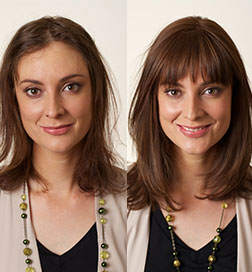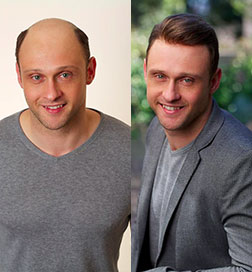If your child has received a diagnosis of alopecia, it is highly likely that you have done your research and know quite a lot about the disease. However, no matter how much you know about alopecia, it is a difficult topic to discuss with your child. Don't let feelings of nervousness or discomfort stop you from having important conversations! A bit of planning can really help. The first step to having a conversation is to think about how best to deliver the information to your child. How old are they? Where and when are they most responsive to conversation? Which conversation styles make your child feel comfortable, and which might cause anger or sadness. Your goal is to help your child stay calm and collected throughout your chat.
The Facts
Alopecia is a common disease which occurs when white blood cells attack rapidly growing hair follicles that make the hair. The stem that provides the follicle with new hair cells is not damaged, meaning that the follicle will always have the potential to grow new hair. Unfortunately, it isn't yet understood why hair follicles behave in this way. Alopecia is often diagnosed in childhood, and it seems that certain sets of genes predispose people to the disease. However, not everyone with a predisposition develop symptom.
The description above may be appropriate for telling an adult all about alopecia, however it might not be appropriate for your child depending on their age and maturity level.
The Facts – for young children
Most youngsters have trouble understanding abstract ideas. This is a skill that we develop as we grow up. For this reason, talking about an attack on hair follicles could be very confusing to a younger child. It might be a more effective approach to describe what's happening right now, in concrete terms. If your child is losing hair, grab a mirror and talk about it in relation to other real-life things. Does anyone your child know also have a bald head or thinning hair? If so, discuss how that person is similar and also different to your child. For example, say, “Grandpa has a totally bald head, doesn't he? But you have hair on the sides of your head. What else makes you and Grandpa different?'
The Facts – for older children and adolescents
Once children are a little older, perhaps eleven or twelve, you might be able to discuss alopecia more deeply. You might start by asking what your child knows about the disease. You might talk about any questions they have, that the two of you could research together. If you are able to talk about your child's emotions openly, it is great to ask about your child's social experiences. Are they feeling left out or misunderstood by their classmates? If they are closing up in conversations like this, it could help to bring in additional support. That could mean a support group for children with alopecia, or a visit to a professional such as a guidance counsellor or family therapist.
Don't let apprehensiveness or discomfort stop you from having important conversations with your kids. Remember that you are the closest person to your child and know them well. You have built a special relationship with them. Make sure your conversations are loving, and that you are a trustworthy, committed source of support for your child.
There are a variety of hair loss solutions available to suit the needs of children diagnosed with alopecia. To explore the best option for your child, book your free consultation here, or call us on 1300 427 778.




